#Tomorrow.io
Text
डेल्टा, एनएफएल, वायु सेना चरम की तैयारी के लिए Tomorrow.io का उपयोग करती है ...
डेल्टा, एनएफएल, वायु सेना चरम की तैयारी के लिए Tomorrow.io का उपयोग करती है …
जैसे-जैसे जलवायु आपदाओं की तीव्रता, गंभीरता और आवृत्ति बढ़ती है, जीवन की रक्षा के लिए तैयारी, साथ ही बुनियादी ढांचे, व्यवसायों और स्थानीय अर्थव्यवस्थाएं पहले से कहीं अधिक महत्वपूर्ण होती जा रही हैं। एक हाई-टेक फोरकास्टिंग कंपनी अब शहर के ब्लॉक के ठीक नीचे, अति-विस्तृत मौसम पूर्वानुमान और पूर्व-तूफान रणनीति योजनाओं की पेशकश कर रही है।
बोस्टन स्थित Tomorrow.io पहले से ही डेल्टा, फोर्ड, जेटब्लू,…
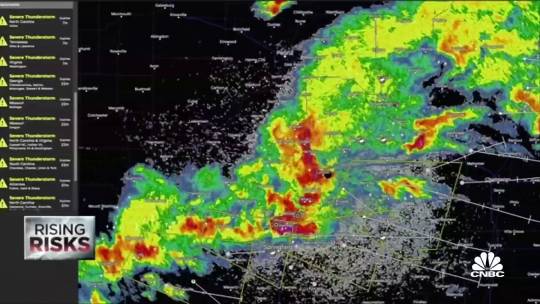
View On WordPress
0 notes
Text
The Future of Air Travel with Next-Gen Weather Forecasting - Technology Org
New Post has been published on https://thedigitalinsider.com/the-future-of-air-travel-with-next-gen-weather-forecasting-technology-org/
The Future of Air Travel with Next-Gen Weather Forecasting - Technology Org
In the complex symphony of factors that orchestrate the aviation industry’s operational efficiency, weather plays both a constant and unpredictable role. The challenges of weather-related disruptions are multifaceted, affecting safety, scheduling, fuel consumption, and, critically, the passenger experience.
Air travel. Image credit: Samuel’s Photos via Unsplash, free license
We stand on the brink of a new era in technological innovation, the industry is witnessing a transformative shift. Advances in weather forecasting technology are beginning to offer a promising horizon—a future where airlines navigate not through turbulence, but towards tranquility.
The Impact of Weather on Airline Operations
Weather unpredictability has long been the bane of the airline industry, manifesting in myriad ways that ripple across operations and financial statements. Delays, cancellations, and diversions, often precipitated by adverse weather conditions, are not just inconvenient for passengers; they represent a significant economic burden on airlines. The Federal Aviation Administration (FAA) estimates that weather is a contributing factor in approximately 70% of all flight delays in the United States, with an annual economic impact running into billions of dollars.
Beyond the immediate financial implications, weather disruptions also affect fuel efficiency.
Aircraft may need to carry extra fuel as a precaution against encountering unforeseen weather en route, leading to increased fuel consumption and emissions. Furthermore, the safety risks posed by severe weather cannot be overstated, with turbulence alone being a common cause of injuries to passengers and crew.
The pursuit of more accurate, timely, and actionable weather information has become a priority for airlines. The ability to anticipate and navigate around adverse weather conditions is critical, not only for maintaining schedules and reducing operational costs but also for ensuring the safety and comfort of passengers.
Innovations in Weather Forecasting Technology
In recent years, the evolution of weather forecasting technology has been marked by significant strides, thanks in large part to advancements in computational power, artificial intelligence (AI), and data analytics. These technologies are enabling meteorologists and tech companies to process vast amounts of data from diverse sources, including satellites, weather stations, and even commercial aircraft, to generate more accurate and granular forecasts than ever before.
The integration of AI and machine learning models, which can identify patterns and predict weather events with a level of precision previously deemed unattainable. These models are continuously refined with new data, enhancing their predictive capabilities over time. For airlines, the implications of these advancements are profound. Accurate forecasts allow for better planning and decision-making, minimizing the impact of weather on operations.
Weather forecasting services tailored to the specific needs of the airline industry represents a game-changing development. These services provide airlines with hyper-localized weather predictions, enabling precise adjustments to flight paths to avoid adverse weather, thereby saving fuel and reducing delays.
A good example of a company leading this charge is Tomorrow.io, a visionary specializing in weather intelligence. By offering detailed weather forecasts that are specifically tailored to the operational needs of airlines, Tomorrow.io exemplifies how specialized weather services can play a pivotal role in enhancing operational efficiency and passenger safety in air travel.
Application of Weather Technology in the Airline Industry
The airline industry’s embrace of advanced weather forecasting technologies is transforming operational strategies in significant ways. By integrating these innovations into their daily operations, airlines are not only enhancing safety and efficiency but also unlocking substantial cost savings.
Route Optimization: One of the most immediate applications is in flight planning and route optimization. With access to real-time, detailed weather data, flight dispatchers can adjust routes to avoid areas of turbulence, storms, or high winds, thereby ensuring smoother flights and reducing fuel consumption. This not only improves passenger comfort but also contributes to sustainability goals by minimizing unnecessary carbon emissions.
Fuel Efficiency and Cost Savings: Accurate weather predictions directly impact fuel efficiency. By precisely forecasting wind patterns and temperatures at different altitudes, airlines can optimize fuel loads, carrying just enough fuel for the journey and contingencies, thereby reducing the weight of the aircraft and saving costs.
Reducing Delays and Cancellations: Improved weather forecasting helps airlines anticipate and mitigate the impact of weather-related disruptions. This proactive approach allows airlines to make early decisions about delays, cancellations, and diversions, significantly improving operational reliability and customer satisfaction.
Enhanced Passenger Communication: Beyond operational improvements, advancements in weather technology also enable airlines to keep passengers better informed about potential delays or disruptions due to adverse weather. This proactive communication can greatly enhance the overall passenger experience, turning potential frustrations into opportunities for positive customer service interactions.
As airlines continue to integrate these advanced weather forecasting tools into their operations, the benefits extend beyond the cockpit and operational centers. Passengers too begin to experience a noticeable difference in their travel experience, marked by fewer delays, smoother flights, and more transparent communication from airlines regarding weather-related schedule changes.
Enhancing Passenger Safety and Comfort
The advancements in weather forecasting technology are not only revolutionizing airline operations but are also significantly enhancing passenger safety and comfort. In an industry where customer satisfaction can be greatly influenced by the travel experience, the ability to manage and mitigate the impacts of weather is invaluable.
Turbulence Avoidance: Turbulence is among the most common concerns for air travelers, potentially causing discomfort and fear. The latest weather prediction tools enable pilots to avoid turbulence more effectively by providing them with accurate, real-time data on weather conditions along their route. This leads to smoother flights and reduces the likelihood of turbulence-induced injuries among passengers and crew.
Improved Decision Making for Safety: Enhanced weather forecasts contribute to safer skies by improving decision-making processes. With access to comprehensive weather data, pilots and ground staff can make informed decisions about departures, landings, and in-flight adjustments to avoid adverse weather conditions, ensuring the highest safety standards are maintained.
Minimizing Disruptions: For passengers, one of the most tangible benefits of improved weather forecasting is the reduction in flight delays and cancellations. By accurately predicting weather patterns well in advance, airlines can adjust schedules proactively, minimizing disruptions to travel plans. This not only saves time for passengers but also reduces the stress and frustration associated with travel delays.
Proactive Passenger Communication: Airlines are now able to use weather forecasting technology to proactively communicate with passengers about potential delays or changes in flight schedules due to weather. This level of transparency and communication helps manage passenger expectations and improves the overall travel experience by reducing uncertainty and anxiety.
The intersection of technology and customer service in this domain underscores a crucial aspect of modern air travel: passenger comfort and safety are paramount. By leveraging the latest in weather forecasting technology, airlines are not just navigating through clearer skies; they are also crafting a more pleasant and reliable journey for their passengers.
The Future in the Clouds
The dawn of advanced weather forecasting technology, spearheaded by innovators like Tomorrow.io, is reshaping the airline industry’s landscape. This isn’t merely an upgrade; it’s a revolution that promises smoother skies ahead. Yet, this bright future is not without its clouds. The integration of AI and big data into meteorology presents a complex dance of potential and challenge, demanding a navigation through privacy concerns, the unpredictability of climate change, and the imperative of universal access.
This technology’s potential to minimize weather-related disruptions, enhance passenger safety, and optimize operations is clear. We’re glimpsing a future where delays are less frequent and the travel experience is markedly improved. However, realizing this vision requires more than technological prowess; it calls for an unprecedented level of collaboration across the industry and a commitment to ensuring these advancements are accessible to all, not just the few.
The journey ahead is charged with promise and pitfalls. As we embrace the advancements in weather forecasting, the industry must also address the shadows they cast. Balancing innovation with ethical considerations, data privacy, and the inclusivity of technological benefits will be key. The skies might be clearer, but the path there requires careful navigation.
#Administration#ai#air#aircraft#Analytics#anxiety#applications#approach#artificial#Artificial Intelligence#aviation#Big Data#carbon#carbon emissions#challenge#change#climate#climate change#clouds#cockpit#Collaboration#communication#Companies#comprehensive#cost savings#customer service#dance#data#data analytics#data privacy
0 notes
Photo
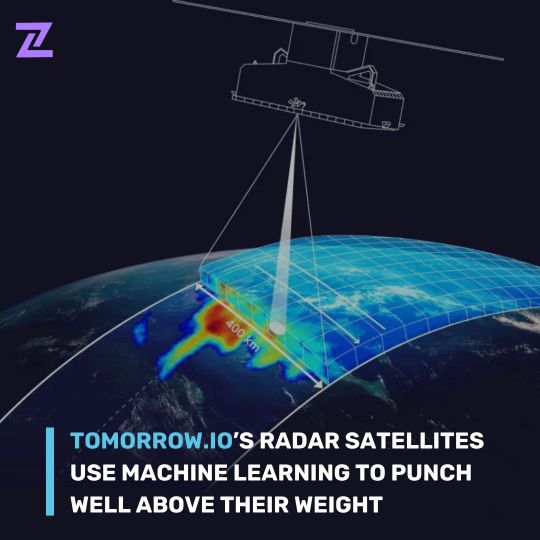




Explore the latest trends in AI with our curated news! Todays Update (31-01-2024): 1. Tomorrow.io’s radar satellites use machine learning to punch well above their weight 2. MasterClass rival Studio Launches Innovative Online Music School with AI-Generated Custom Curriculums 3. ChatGPT Users Upgrade Chats with Seamless GPT Integration 4. South Korean AI Chipmake Rebellions Scores $124M for Next-Gen "Rebel" Chip, Partnering with Samsung 5. Empowering Partners: Check Point Launches Groundbreaking Cybersecurity Initiative Dive deeper into these stories and more on https://eizie.ai #AI #TechNews #Innovation
0 notes
Text

Tomorrow.io’s radar satellites use machine learning to punch well above their weight http://dlvr.it/T22jHp
0 notes
Link
Washington DC (UPI) Aug 24, 2023 Joining the likes of NASA, weather intelligence company Tomorrow.io said Thursday its radar satellites have the unique ability to monitor precipitation intensity from space. "This achievement places Tomorrow.io alongside NASA and JAXA (The Japan Aerospace Exploration Agency) as the only entities to have ever taken such measurements from orbit," the company announced. Tomorrow.io
0 notes
Text
A brand-new insurance coverage world is coming where clever agreements change insurance coverage files, blockchain "oracles" supplant claim adjusters, and decentralized self-governing companies (DAOs) take control of conventional insurance coverage providers. Countless bad farmers in Africa and Asia will be qualified for protections like crop insurance coverage too, whereas previously, they were too bad and too dispersed to validate the expense of underwriting. That is the vision, anyhow, on screen in the current Smartcon 2022, a two-day conference that looked for to supply "unique insights into the next generation of Web3 development." Subsistence farms, where households generally live off what they grow and nearly absolutely nothing is left over, account for as much as two-thirds of the establishing world's 3 billion rural individuals, according to the United Nations. They nearly never ever receive insurance protection and most likely would not understand what to do if it were used. " In sub-Saharan Africa, for instance, where I matured in Kenya, insurance coverage is generally not available. 3% have access to it, however no one purchases it, generally," Lemonade Foundation's Roy Confino discussed at the two-day New York City occasion. The Lemonade Foundation, a not-for-profit established by United States insurance provider Lemonade, lags the current development of the Lemonade Crypto Climate Coalition, a group that thinks "blockchain has the possible to pool that danger together" and "essentially fix the core issue that has actually hindered the scale of insurance coverage in the establishing world for revenue services which is expense," stated Confino at Smartcon2022 Establishing members likewise consist of Hanover Re, Avalanche, Chainlink, DAOstack, Etherisc, Pula and Tomorrow.io. Insurance is troublesome in bad countries for numerous factors. It can't be quickly dispersed since there are barely any regional insurance coverage representatives or brokers, and traditionally insurance coverage is "offered," not "purchased." Insurance coverage claims can't be confirmed without fantastic expenditure since, generally, there aren't any claims adjusters on the scene to make damage evaluations. This renders underwriting un-economic. But, it need not always stay that method. Parametric insurance coverage designs can possibly cut manufacturer expenses by automating lots of conventional insurance coverage procedures, making it lucrative to finance those formerly considered uninsurable. Often called "index insurance coverage," these designs guarantee an insurance policy holder versus a particular occasion by paying a set quantity based upon an occasion's magnitude instead of the losses sustained. For example, if rain hasn't fallen in a particular established area in Kenya for 3 weeks, a blockchain "oracle"-- it might be a regional weather condition station-- immediately sends out a message to a clever agreement that from another location sets off a payment to the policyholding farmer's smart device. It bypasses the claims change procedure totally. It does not matter whether a private farmer's field is harmed. All insurance policy holders in the location are paid. Crop insurance coverage is a great usage case for parametric designs since much of the forces that can harm crops can be objectively determined, such as rains, wind speeds, temperature levels and others. Self-executing clever agreements likewise make sure that payments for weather condition catastrophes and so forth are nearly instant, kept in mind Sid Jha, creator and CEO at Arbol-- a parametric insurance coverage supplier-- and this is particularly essential in the establishing world where numerous farmers live hand to mouth. "You do not have consumers waiting weeks, months who in a lot of cases can declare bankruptcy waiting on an insurance coverage check," he stated, speaking at a different Smartcon 2022 session. Recent: NFTs and crypto supply fundraising alternatives
for breast cancer awareness Parametric insurance coverage isn't totally brand-new; it has actually been around for numerous years. Blockchain-enabled parametric insurance coverage has actually simply emerged in the last couple of years. Many, if not all, its usage cases are still in the pilot phase. The Coalition, for example, isn't anticipating to scale up its programs up until next year. Many think that tradition insurance coverage systems might stand some considerable enhancement. "Traditional indemnity insurance coverage has lots of downsides: it is sluggish, administrative, constrained to house damages, and includes substantial unpredictability," composed Wharton School associate teacher Susanna Berkouwer just recently. She explained a parametric cyclone insurance coverage item that utilizes blockchain innovation in the Commonwealth of Dominica. NASA-generated cyclone notifies touch off automatic global bank transfers to insurance policy holders' checking account. Tasks like these deserve more research study in Berkouwer's view. Hindrances stay: Will farmers register? Supplying the world's subsistence farmers with inexpensive crop insurance coverage and potentially other defenses through chain-based parametric insurance coverage deals with some challenging challenges. One is informing farmers in the intricacies of insurance coverage. There is actually no other way at present that this can be done quickly by innovation or automation alone. Tinka Koster and her associates at the Netherlands' Wageningen University, for instance, just recently finished an evaluation of the World Bank Group's Global Index Insurance Facility's (GIIF) engagement in Kenya. To increase index insurance coverage take-up rates amongst African subsistence farmers, GIIF and others would require to improve "awareness, understanding and understanding by the farmers about the insurance coverage," stated Koster. " The last-mile outreach is a crucial obstacle for lots of services to smallholder farmers, consisting of index insurance coverage," Koster informed Cointelegraph in emailed actions collaborated with group coworkers Marcel van Asseldonk, Cor Wattel and Haki Pamuk. "Technology can assist bridge part of this space, however innovation alone is inadequate." " Sales and item understanding are big expenses in typically remote and tough to reach locations," Leigh Johnson, assistant teacher in the department of location at the University of Oregon, informed Cointelegraph. "Renewal rates are infamously bad."" Many farmers require to see that insurance coverage is a tool for handling danger and not for betting on a specific result," stated Jha, who concurred that informing farmers on the requirement for danger management tools like insurance coverage is crucial. As Jha informed Cointelegraph: " When farmers have the ability to get access to some kind of subsidized insurance coverage offered by the federal government or an NGO, they end up being far more familiar and comfy with the idea, which education procedure ends up being much easier in regards to supplying specialized protection items that fulfill the distinct requirements of farmers." In GIIF's Bima Pima item for Kenyan farmers, the World Bank Group program utilized village-based consultants (VBAs) to assist disperse the insurance coverage item-- basically replacing conventional insurance coverage representatives. The VBAs were paid monthly for their efforts. According to the Wageningen report, these advisors were "pleased with the SMS messages and the direct premium payment. They discover it tough to persuade farmers and are unsure about the insurance coverage pay-out due to the fact that the item is so brand-new." Does parametric insurance coverage even require DLT innovation? If parametric insurance coverage is going to prosper in emerging markets, does it even require blockchain innovation? The World Bank Group's GIIF parametric insurance coverage jobs in Africa, for example, did not utilize blockchain innovation.
Exactly what does index insurance coverage lose if it does not utilize a decentralized digital journal? " Blockchain is just a tool," Jha informed Cointelegraph, and one can utilize numerous tools to get the exact same result. Still, the digital journal's immutability and auditability can construct trustworthiness for the program: " What DLT's do offer is rely on locations that normally tend to do not have trust, and permit potentially a more effective micro payment system than what presently exists in a few of these nations in regards to paying out and gathering funds." Johnson, on the other hand, boils down "directly on the 'no wise agreements' camp, exactly due to the fact that parametric agreements fail so frequently, and there is an essential case for fixing these retroactively" in the interests of fairness and equity. In a 2021 post, Johnson kept in mind that ecological quotes made by parametric market gadgets utilized to commodify threat "are often incorrect, often grossly so." In the very first season of R4's Ethiopian program, "among the most internationally distinguished programs guaranteeing smallholder farmers versus weather condition threat utilizing parametric indices," composed Johnson, R4 made an ex gratia "voluntary contribution" to teff farmers "list below rain shortages that did not activate the agreement." Such transfers later on ended up being "relatively regular." " I'm uncertain just how much info farmers would need re clever contracts/blockchain at the time of registration," Johnson informed Cointelegraph, "however one can envision them being exceptionally hesitant of unidentified financial innovations and companies." If blockchain innovation might raise farmers' awareness and understanding about insurance coverage, included Koster, "then it would likewise assist for more upscaling the index [parametric] insurance coverage in African context." Still, this all may spend some time. Jha was asked the length of time it might be prior to farming insurance coverage can accomplish prevalent use amongst subsistence farmers in the establishing world in locations like Southeast Asia or Africa-- 2 years? 5 years? 10 years?" Probably 10 years," Jha informed Cointelegraph, pointing out the obstacles of education, expense and absence of information, i.e., "whatever from an absence of weather condition stations, crop yield history, and absence of information on farming practices." Many farmers require to see that insurance coverage is a practical tool for handling danger, and this is where self-executing wise agreements might supply an effective example. If farmers see their next-door neighbors being compensated instantly throughout a severe weather condition occasion, they may think about buying an index policy themselves. Government aids might assist. "There is a great deal of work that is required in regards to making insurance coverage more inexpensive so that underserved stakeholders who require these tools can access them," stated Jha, while Johnson included, "I believe the very best development will originate from broader state adoption of safeguard programs utilizing parametric services-- that's how you get protection at scale." In regards to scaling, the World Bank's GIIF has actually currently made some development. "The turning point of one million farmers guaranteed has actually currently been reached in Zambia, with the index insurance coverage bundled with the subsidized fertilizer program," Koster stated, while in Senegal, GIIF is presently reaching half a million farmers, with a comparable number in Kenya with a government-supported program. Recent: Meta's Web3 hopes face obstacle of decentralization and market headwinds" This reveals that it is possible to reach considerable varieties of smallholder farmers," Koster informed Cointelegraph, "however not without substantial federal government assistance." In amount, while parametric insurance coverage designs may allow insurance coverage underwriters
to pool threats, making it rewarding to guarantee the formerly uninsurable, and blockchain-enabled clever agreements can guarantee that cash-strapped farmers got payments throughout catastrophes nearly right away, much work still requires to be carried out in persuading economically unsophisticated and frequently distrustful farmers to register for such programs. Innovation alone will not suffice, and state entities might require to get included. Read More
0 notes
Text
Tomorrow.io: The app used by the NFL and the US Air Force to accurately forecast extreme weather
Tomorrow.io: The app used by the NFL and the US Air Force to accurately forecast extreme weather
Knowing the exact weather forecast, especially in times of extreme conditions, is something that is extremely important in order to save lives and protect infrastructure that may be compromised.
Faced with this need, Tomorrow.io was born, an app that is used by both the NFL and the US Air Force, thanks to the fact that it offers predictions about precipitation, snowfall, fire risk, as well as…
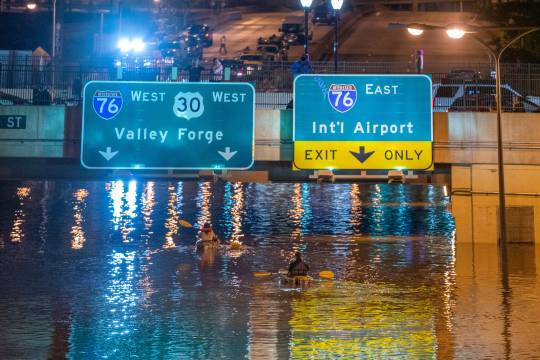
View On WordPress
0 notes
Text
Delta, the NFL, and the U.S. Air Force are turning to this app to prepare for extreme weather
Delta, the NFL, and the U.S. Air Force are turning to this app to prepare for extreme weather
As the severity, intensity and frequency of climate disasters increase, preparation is becoming more crucial than ever to protect lives, as well as infrastructure, businesses and local economies. One high-tech forecasting company is now stepping up, offering hyper-detailed weather prediction and pre-storm strategy plans, right down to a city block.
Boston-based Tomorrow.io already boasts clients…

View On WordPress
0 notes
Text
Delta, the NFL, and the U.S. Air Force are turning to this app to prepare for extreme weather
Tomorrow.io aims to tell customers how extreme weather will affect them while there's still time to prepare. http://dlvr.it/SWwQrV
0 notes
Text
EnergySource Innovation Stream with Tomorrow.io: Detailed weather insights for better energy outcomes
EnergySource Innovation Stream with Tomorrow.io: Detailed weather insights for better energy outcomes
Please join the Atlantic Council Global Energy Center for the next episode of EnergySource Innovation Stream. This series highlights energy innovations with the potential to reshape the global energy system through discussions with the companies and individuals working diligently to bring those innovations to bear on the energy transition. On Monday, July 15 from 10:30 a.m. – 11:00 a.m. ET, the…

View On WordPress
#accuracy#cracksthecode#efficiency#optimization#practice#productdevelopment#productivity#Saas#software#softwareprojects#softwaresystems
0 notes
Photo

Weather platform ClimaCell is now Tomorrow.io and raises $77M https://ift.tt/31wr93Q
1 note
·
View note
Text
Model Of Tomorrow : Author Sees County As Preview Of New Industrial World
Model Of Tomorrow : Author Sees County As Preview Of New Industrial World
Model Of Tomorrow : Author Sees County As Preview Of New Industrial World. The most relied upon brands in the world rely on tomorrow.io. Extra validation levels are detailed where presented see below for more;
from venturebeat.com
(opens in a new window) to use this feature you must be a registered user of scopus. World leaders face six interconnected challenges, and although approaches and…

View On WordPress
0 notes
Text
Blockchain To Combat Climate Change
Insurance company Lemonade has partnered with prominent blockchain companies to form the Lemonade Crypto Climate Coalition (L3C) decentralized autonomous organization (DAO) to protect farmers from climate change by offering blockchain-based insurance.
The insurance firm founded Lemonade Foundation, a nonprofit focused on creating social and environmental change with the use of blockchain-enabled technologies. The foundation will work closely with members of the L3C including Chainlink, Avalance, DAOstack, Etherisc, Hannover Re, Pula and Tomorrow.io.
The climate insurance will take the form of a decentralized application (DApp) on the Avalanche platform. The DApp will also enable farmers to make and receive payments using crypto or with their local currencies. According to the announcement, the DApp will be rolled out to Africa in 2022.
Daniel Schreiber, director at the Lemonade Foundation, said that the foundation was created to build technologies that are exponentially impactful. With this, they “expect to harness the communal and decentralized aspects of web3 and real-time weather data to deliver affordable and instantaneous climate insurance to the people who need it most,” said Schreiber.
https://cointelegraph.com/news/lemonade-partners-with-blockchain-bigwigs-to-combat-climate-change
0 notes
Text
Carrot Weather

Carrot Weather Apk
Carrot Weather Pc
Carrot Weather Website
3 fad free steps to lose weight.

Reality check.
Be honest and track everything.
CARROT is, quite simply, the most customizable weather app in the world. Premium Club members can use Interface Maker to build the weather app of your dreams. Add new components, rearrange them, change their design, insert additional data points, and more. The Carrot Weather app is $16.99 CDN for the Mac edition, which I cannot justify, and it is $6.99 CDN for the iPhone/iPad app, which I paid already. I purchased the mobile version recently. $4.99 at Apple.com. See It As long as you're willing to upgrade to its premium tier, Carrot Weather is a fine Android alternative to Dark Sky. In fact, it draws from Dark Sky's own.
Carrot Weather Apk
4.8 / 5(1021 Reviews) Over 5911 5 Star App reviews

Special statements: issued to highlight significant weather or express uncertainty. Watches: alert you about weather conditions that are favourable for a storm or severe weather, which could cause safety concerns. Warning: an urgent message that severe weather is either occurring or will occur. CARROT Weather (is an eerily accurate weather app that delivers hilariously twisted forecasts.
Track anywhere, anytime, all the time.
Whether your goal is to lose weight, improve your diet or eat for fitness, Nutracheck is your must-have food tracker.
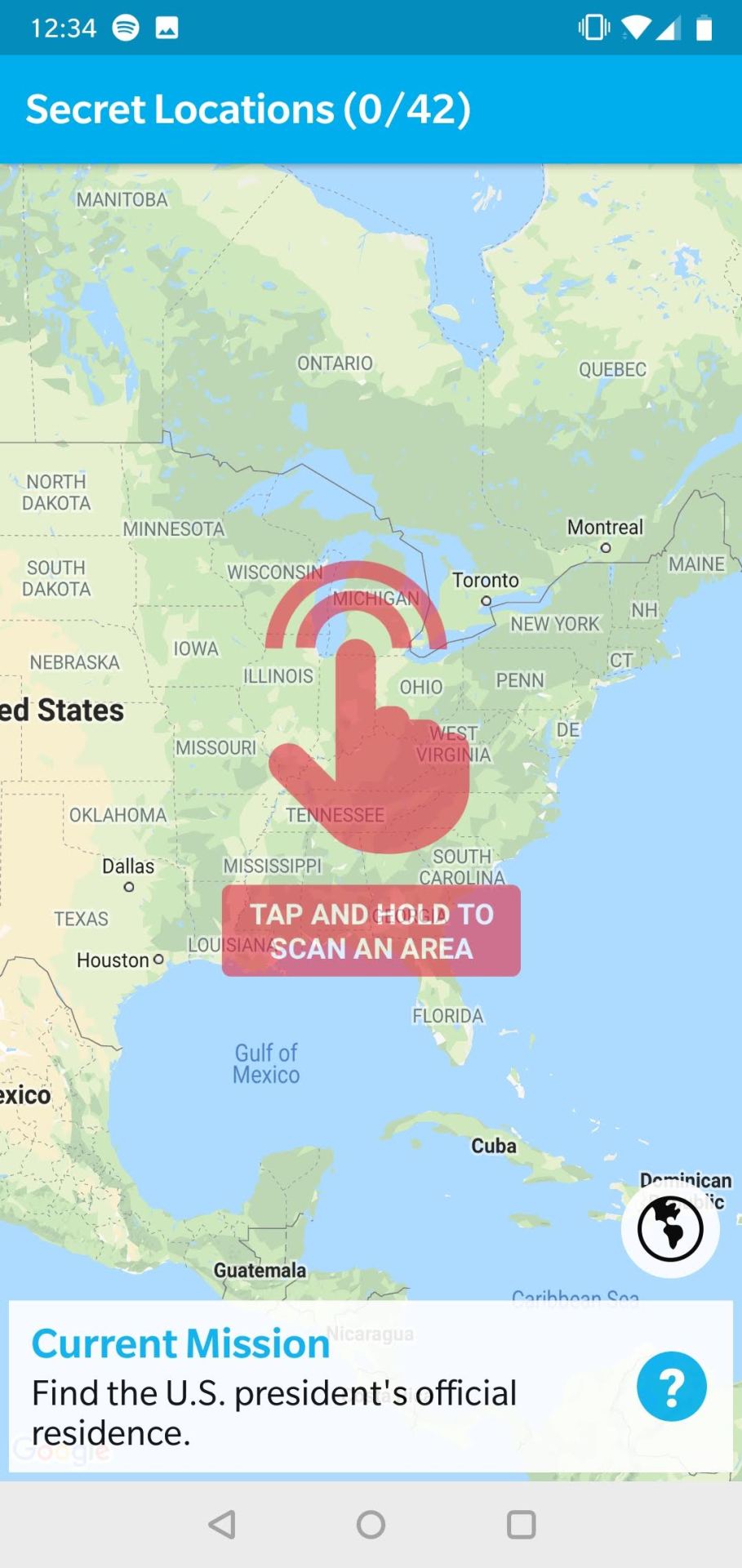
Use our barcode scanning App on your phone or tablet. Or keep a food diary online via the website. Or use together.
We track calories and 6 key nutrients - carbs, sugar, protein, fat, saturated fat and salt. Links with Fitbit activity trackers and Apple's Healthkit.
Life changing transformations*
Maria lost 13 stone184lbs83kg
'I've lost 13 stone184lbs83kg and can fit in 1 leg of my old gym trousers!'
Maria's story
Couple lost 10.9st152lbs69.2kg
Alison & Martin - 'It has taught us both that this isn't a 'diet'
Alison & Martin's story
Darren lost 9st126lbs57.1kg
Darren lost 9st126lbs57.1kg 'I feel like a new man already!'
Darren's story
*Weight loss is individual and your personal rate of loss may vary from any case studies shown on this website.
This week's top review:
Great! There is no such thing as 'free' or 'zero' pointed foods. They all have calories. This app keeps it real.
Written on: 03/01/2019, by Sarah-Jane Dolby on the Google Play store.
Connects to your Fitbit.
Nutracheck has linked up with Fitbit - the global leader in the fast-growing Connected Health and Fitness category.
Link your Fitbit to Nutracheck through our App or website and we'll pull activity data into your Nutracheck exercise diary and send your daily calorie totals to your Fitbit dashboard.
CARROT Weather is a crazy-powerful (and privacy-conscious) weather app that delivers hilariously twisted forecasts.
** 2021 Apple Design Award winner, App Store Editors’ Choice award winner, and featured by The New York Times, Good Morning America, CNN, Wired, & more! **
Overflowing With Personality
Choose one of five personalities for CARROT, from the straitlaced “professional” to the profanity-laden “overkill.” You’ll actually be looking forward to a torrential downpour just to see what your weather robot has in store for you!
Accurate & Detailed
CARROT’s super accurate weather data gives you lightning-quick access to your current, hourly, and daily forecasts. And the easy-to-read details screens are just dripping with with meteorological goodness.
Privacy First
Your personal information, including your location data, will never be sold to third parties.
Carrot Weather Pc
More Than A Weather App
Follow clues to track down 80+ secret locations. Unlock 60+ achievements. Film your own TV-news-style weather report videos. Or use Augmented Reality Mode to bring CARROT right into your living room.
Join Premium Club to unlock:
- More weather data sources, including Dark Sky, AccuWeather, and Tomorrow.io
- Notifications, including precipitation, weather alerts, and lightning strikes (where available)
- Home Screen widgets
- Apple Watch complications and background updates
- Weather maps with 20+ data layers (where available)
- Customization of the entire user interface
- And so much more!
Don’t make CARROT angry. Download her now!
Carrot Weather Website
---
CARROT Weather uses auto-renewing subscriptions.
Premium provides additional features like weather data sources, notifications, customization, widgets, and Apple Watch complications.
Premium Ultra includes all the features of Premium, plus rain, lightning, and storm cell notifications (where available), a weather maps widget, and quick data source switching.
Premium Family includes all the features of Premium Ultra, with the added benefit of being shareable with up to five family members via Apple’s Family Sharing service.
Payment will be charged to your Apple ID account at the confirmation of purchase. The subscription automatically renews unless it is canceled at least 24 hours before the end of the current period. Your account will be charged for renewal within 24 hours prior to the end of the current period. You can manage and cancel your subscriptions by going to your App Store account settings after purchase. Cancellation of the current active subscription period is not allowed.
Terms of Use: http://support.meetcarrot.com/weather/terms.html
Privacy Policy: http://support.meetcarrot.com/weather/privacypolicy.html

0 notes
Text
Tomorrow.io wins Air Force funding for weather satellite constellation
https://sciencespies.com/space/tomorrow-io-wins-air-force-funding-for-weather-satellite-constellation/
Tomorrow.io wins Air Force funding for weather satellite constellation
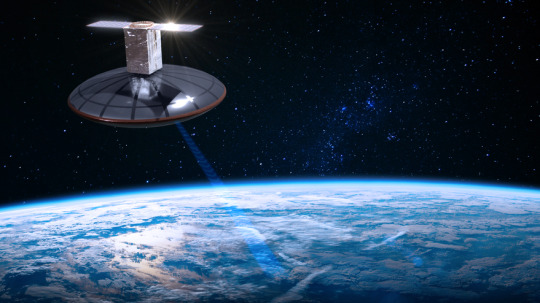
SAN FRANCISCO – Tomorrow.io won a $19.3 million contract from the U.S. Air Force to support its planned constellation of approximately 32 weather satellites.
The Air Force issued the contract for Tomorrow.io’s constellation of radar-equipped weather satellites through its AFVentures Strategic Funding Increase program, which is focused on large-scale, strategic capabilities in support of Department of Defense missions.
Boston-based Tomorrow.io, which calls itself a meteorological intelligence company, plans to provide weather and ocean observations, including detailed global coverage of precipitation as a service to government agencies around the world.
With its 32-satellite constellation, Tomorrow.io plans to gather data at an average rate of once per hour globally, which it will share with customers through its proprietary modeling suite, the Weather Intelligence Platform. Government customers also can opt to receive raw data in addition to model outputs.
Astro Digital is building Tomorrow.io’s first two mini-fridge-size satellites under a contract announced in September. The satellites are scheduled to be launched in late 2022. Tommorow.io does not have manufacturing or launch contracts in place for the remainder of its constellation, which it plans to complete in 2024.
Tomorrow.io, formerly known as ClimaCell, provides weather data to commercial customers including Delta Air Lines, Uber Technologies and Amazon Web Services. In March, the company announced that it raised $77 million in a Series D funding round.
#Space
0 notes